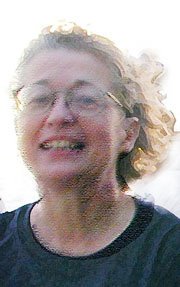LA Sludge at Green Acres Farm in Kern County
Waste is big industry in Los Angeles. 10 million people dump a lot of stuff in their sewer system. And both incoming water and outflowing sewage are affecting the larger region's sustainability. Several questions come to mind. Can we reduce it? Can we separate junk out of the sewer to make it "cleaner"? It is important to ask these questions in order to balance the system in intake and outflow that is part of maintainaing a sustainable community.
The City of Los Angeles recovers residues, known as biosolids, from its wastewater treatment plants. The Hyperion Treatment Plant (HTP) and the Terminal Island Treatment Plant (TITP) are responsible for managing the biosolids that are produced from the wastewater processing.
LOS ANGELES - Green Acres is a farm where corn stalks grow twice as tall as men and wheat sprouts lush and green. Green Acres is also Los Angeles' outhouse.
Every year, this city trucks ton after ton of sludgy human waste to be spread as "commercial grade fertilizer" on several thousand Central Valley acres it owns.
Residents in agricultural Kern County voted this summer to stop accepting these exports from the sprawling metropolis to their south. Now, if Los Angeles has its way, a federal judge will order that Green Acres continue to receive 65 million gallons of treated waste each year.
In 2000, Los Angeles leaders thought they had found an elegant solution -- spread the treated waste over a 4,700-acre farm the city bought for nearly $10 million about 15 miles south of Bakersfield.
The biosolids, which are strictly regulated, help grow corn, wheat and alfalfa. Those crops are packaged as cattle feed. Cows produce milk that can be sold in stores.
And so Green Acres was hailed a success story, winning awards from the Environmental Protection Agency and others -- including one for a public information video called "Where Does it Go?"
Residents of Kern County, one of the nation's most productive farming regions, think the solution stinks. Some worried the sludge would pollute groundwater. Others were convinced it would hurt Kern's economy.
Still, city officials and others involved in the lawsuit are scrambling for alternatives.
The most promising option, announced in an awkwardly worded press release, is to inject "exceptional quality biosolids" under Terminal Island, a man-made land mass at the ports of Los Angeles and Long Beach.
Asked why the city couldn't use more of its superior product on its own lawns and golf courses, as suggested by some Kern residents, Public Works President Ruiz said that was attempted once. "We tried to sell compost from some of our green waste, and couldn't find a market for it," she said.





1 Comments:
Learn more about composting at Backyardnature.com
Post a Comment
<< Home